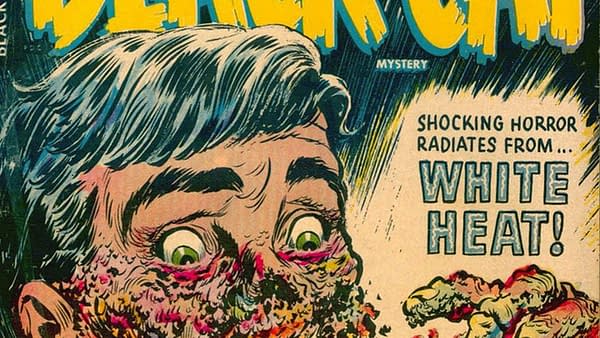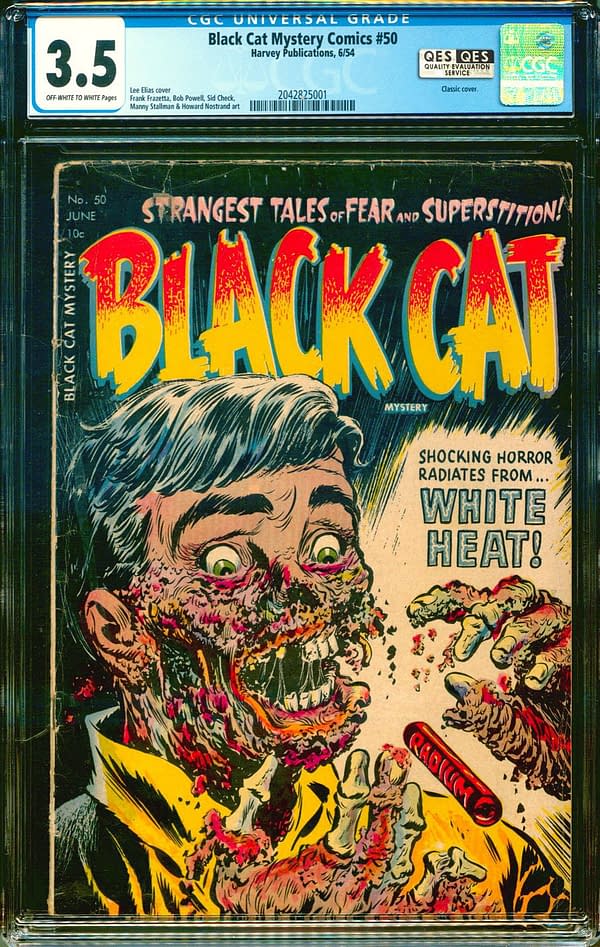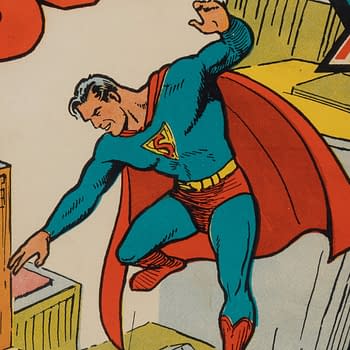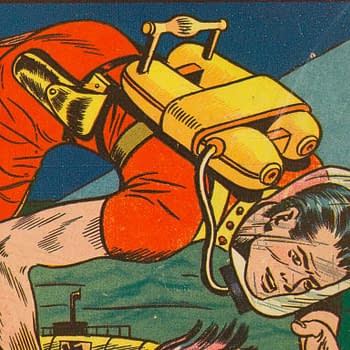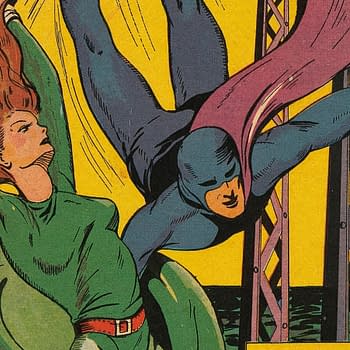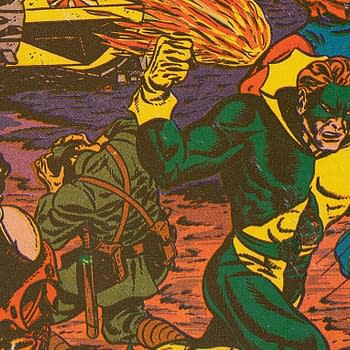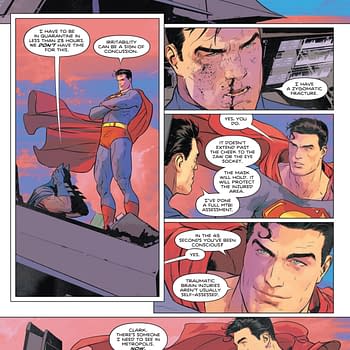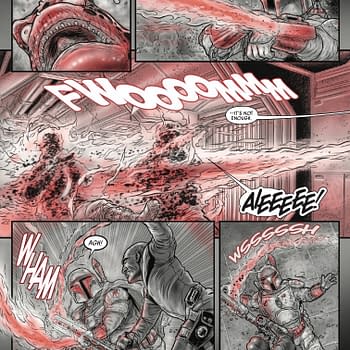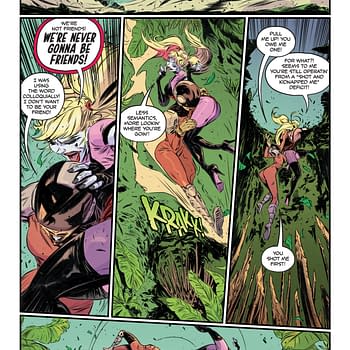Posted in: Comic Connect Sponsored, Comics, Vintage Paper | Tagged: Black Cat Comics #50, Lee Elias
Black Cat Comics #50 and the High Cost of Uranium
"Why did they write this story at this moment in time?" has become my favorite question to ask when it comes to comics history. The answer is often just as entertaining as the comics themselves, and is always way more specific than you might guess. I think I've learned more about American history than I have about comics history by asking this question, and Black Cat Comics #50 is a textbook example of this pairing of history and comics history, which makes vintage comics reading and collecting all the more fascinating.
The description of this issue at today's Comic Connect auction session tells us what we need to know about why Black Cat Comics #50 is sought after by collectors:
This is one of the greatest classic covers of the pre-code horror age, and one which was probably in no small way responsible for the induction of the Comics Code, The indelible image of the radium melting this poor fellow's face and hands is the stuff of legend for knowledgable comic collectors, horror hounds go mad for this book when it comes up for auction. Definitely one of the top horror covers in the history of the industry, this Lee Elias cover illustration cannot be unseen once viewed, when you add in an uncredited Frank Frazetta contribution to this issue, there is simply no denying the power and desirability of this comic.
A shockingly classic cover indeed, and I think the history behind the cover story, "White Heat" that inspired Lee Elias here is almost more of a shock than the cover itself, from our perspective in 2019.
The early 1950s and the atomic age that came along with it created a uranium boom around the world. And, uh… not just the explosive kind, but the financial kind as well. This period was akin to the gold rush days of about a century prior to that time in the U.S. — uranium prospecting had gone mainstream. The U.S. Govt was paying out bonuses for uranium site discoveries. You could even get a geiger counter out of the Sears catalog, and learn how to find uranium from any number of mainstream magazines or books from the period.
Naturally, such a boom attracted more than prospectors — it attracted thieves, and rather surprisingly… lots of them. The newspapers of 1950-1954 are full of accounts of uranium theft. In January 1953, for example, Helmuth Goeltzer was arrested for trying to sell a stolen five-pound cube of uranium for $25,000.00. In January 1952, Robert S. Mathews, a former engineer at the Hanford atomic plant was arrested by the FBI and charged with stealing a four-pound piece of uranium. Those are just two example out of dozens of incidents that took place during the period that lead up to early months of 1954 when this comic would have been written.
Scanning the news of the early 1950s, thefts by such workers at atomic sites were far from unheard of, and itr is this particular concept which appears to inform the "White Heat" story of Black Cat Comics #50, which you can read at the digital comics museum, and bid on at Comic Connect right now.
And I have to say… I kind of want one more now that I know how the history behind that cover works.



